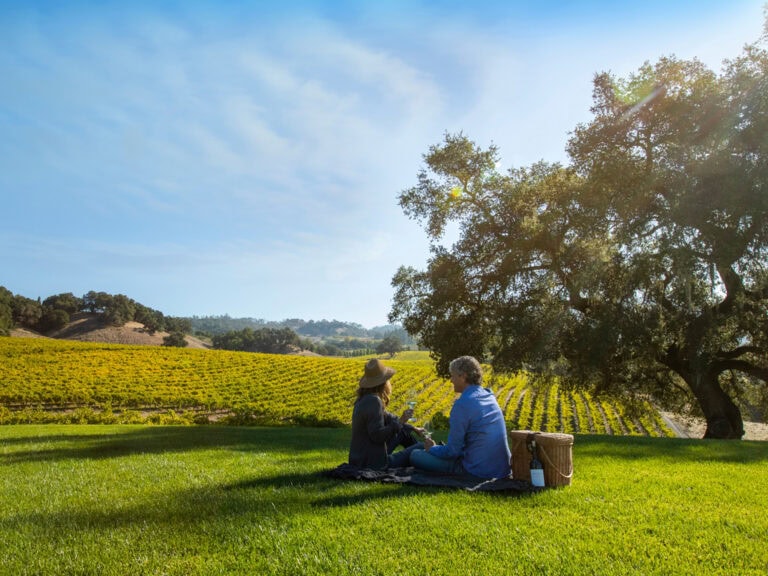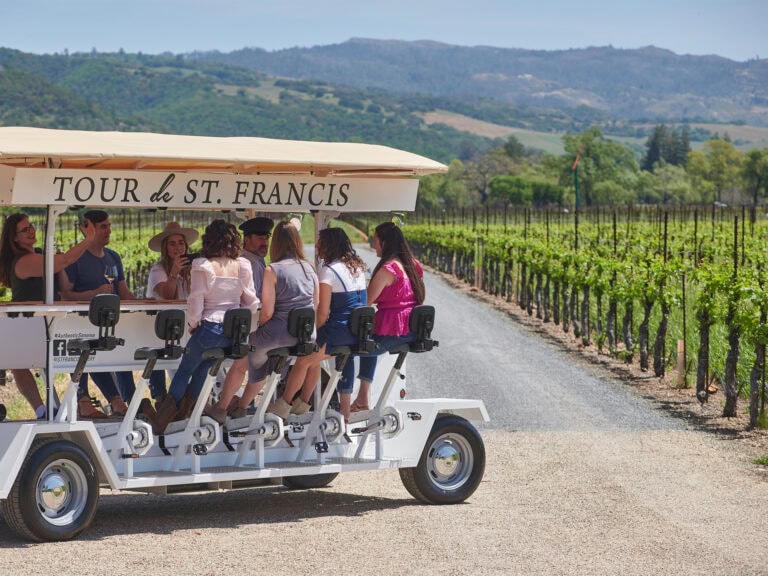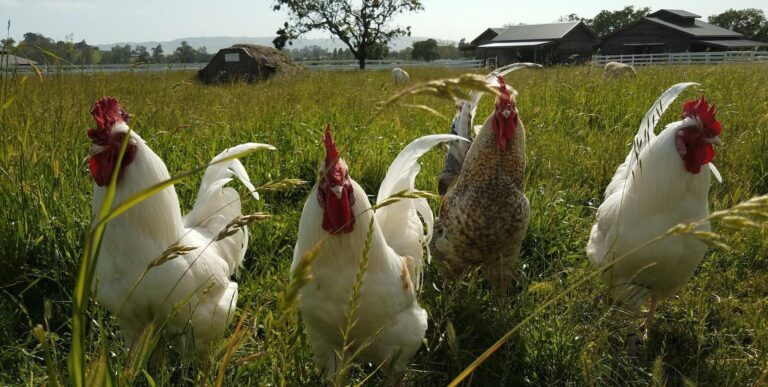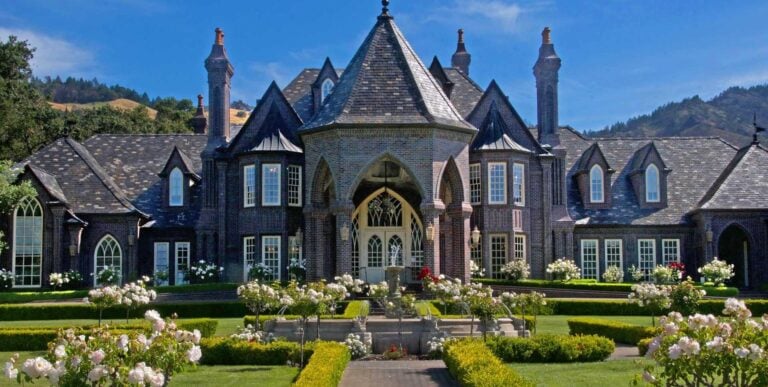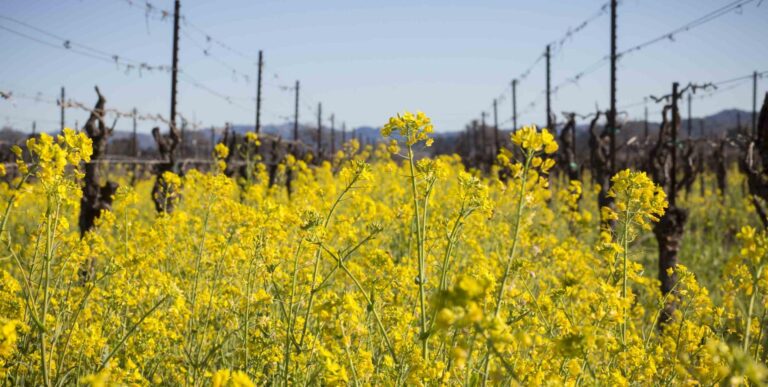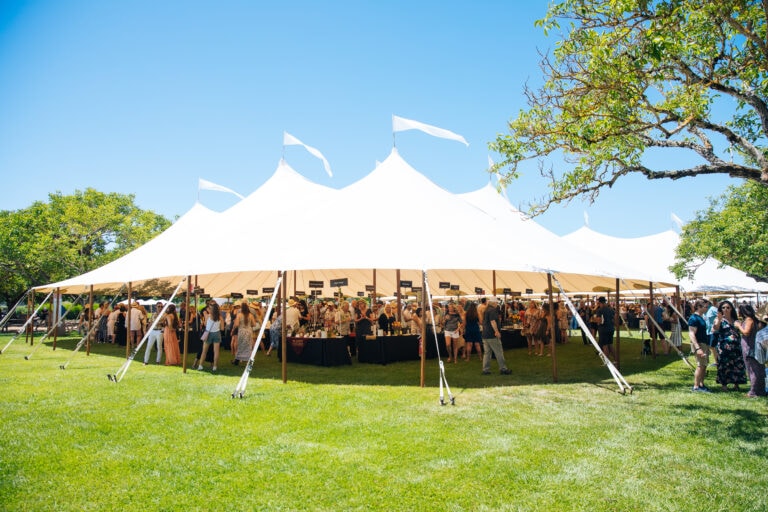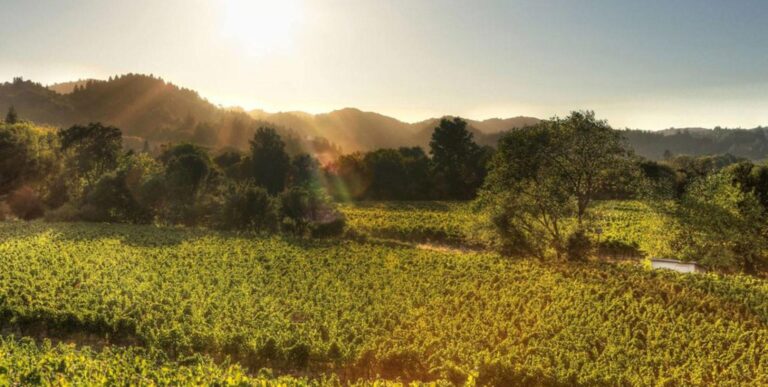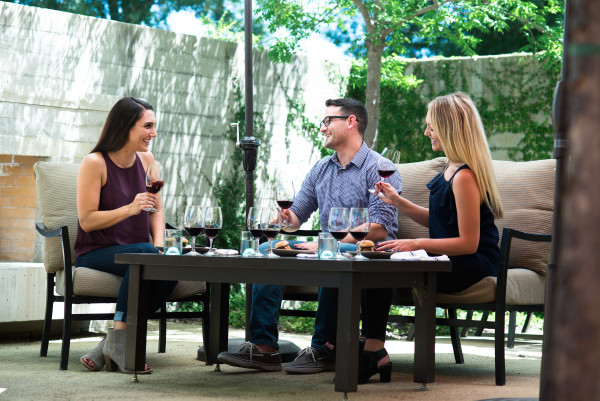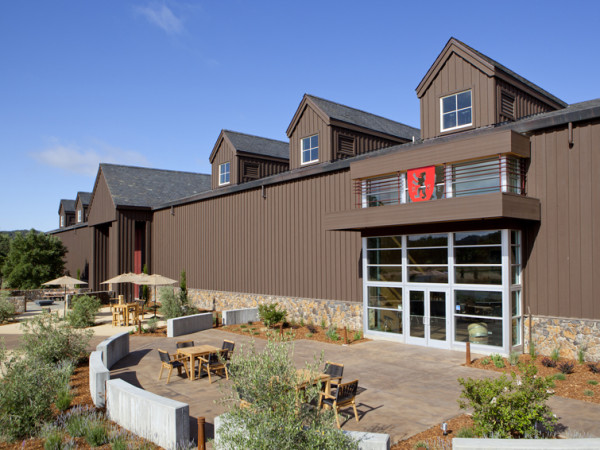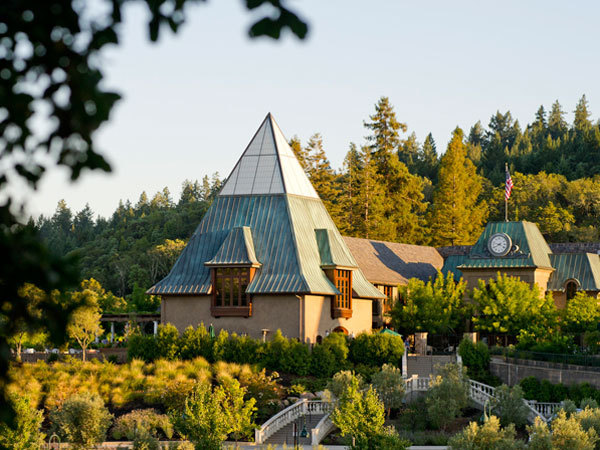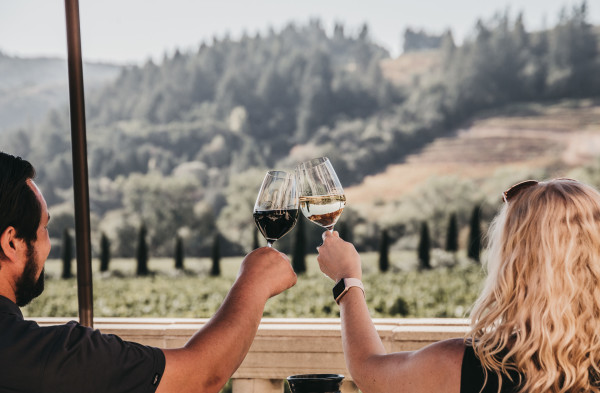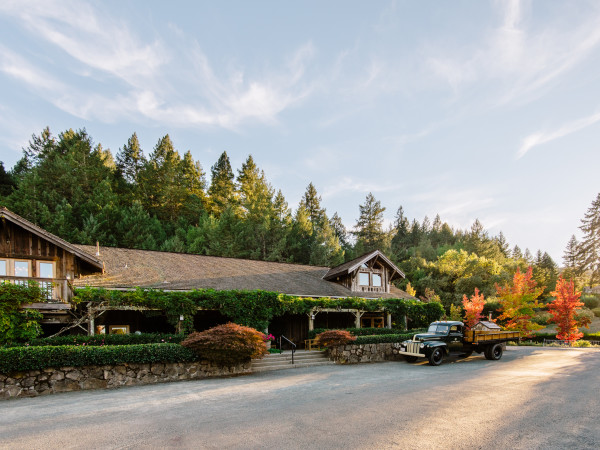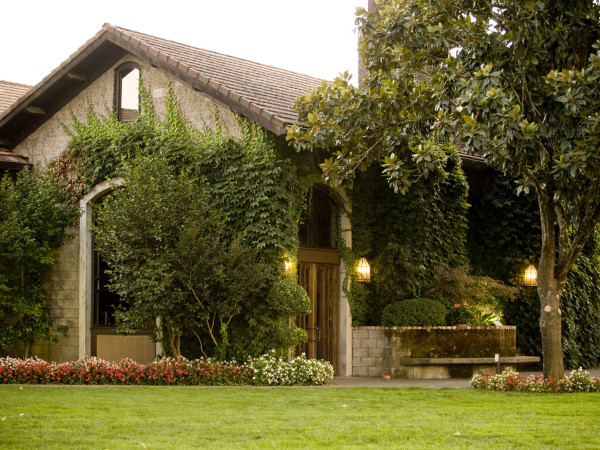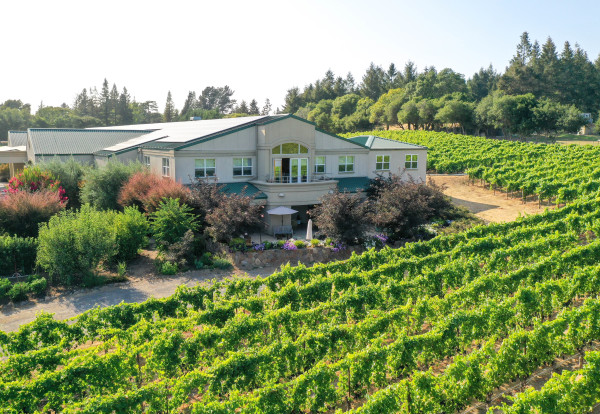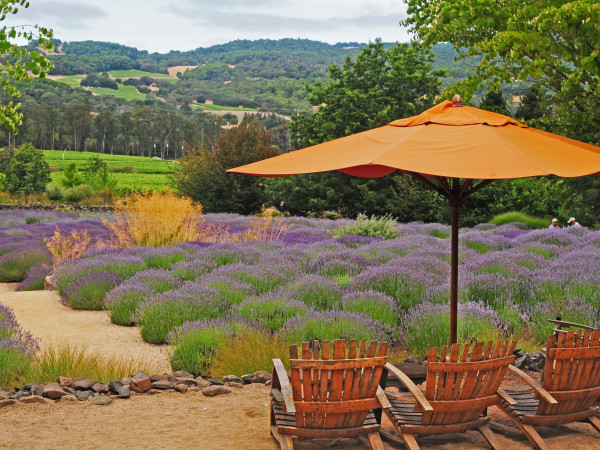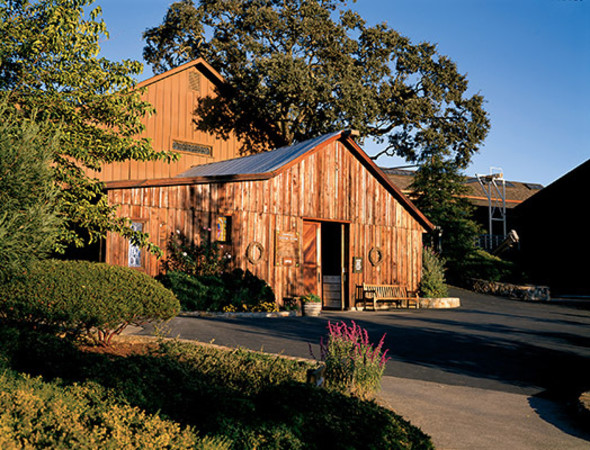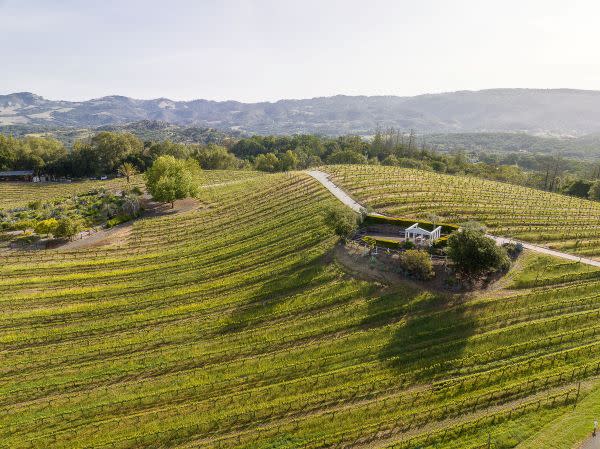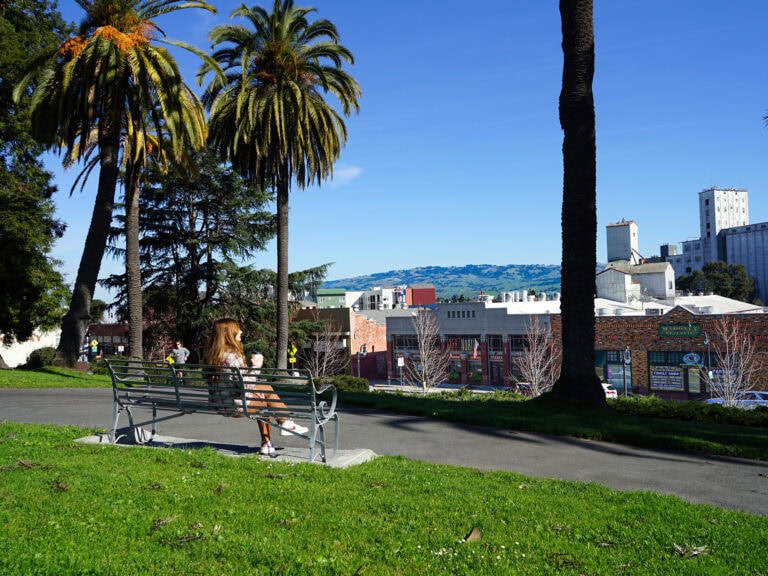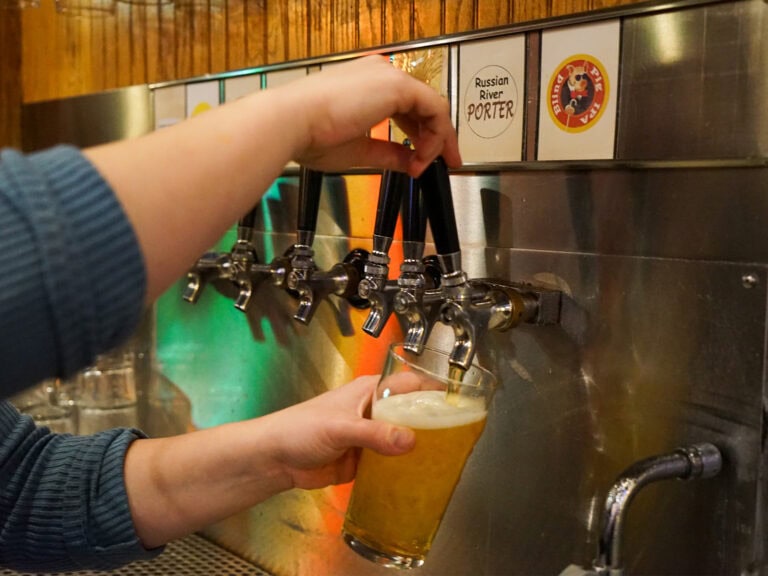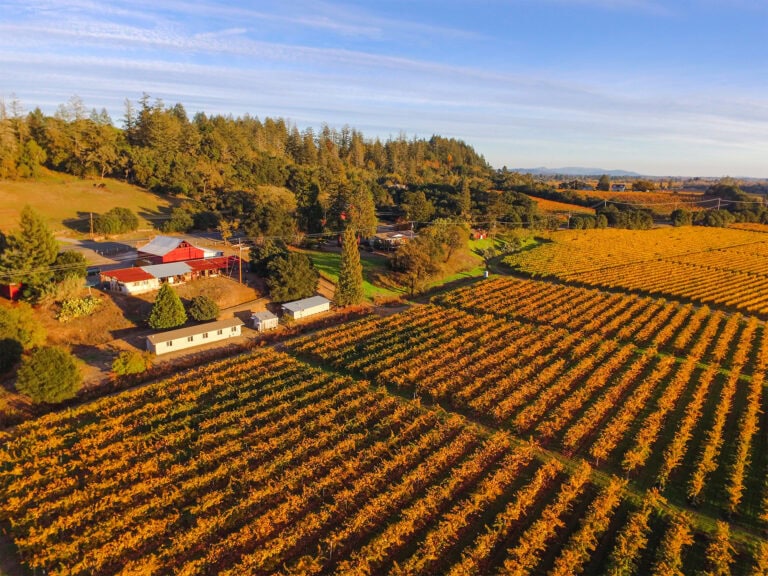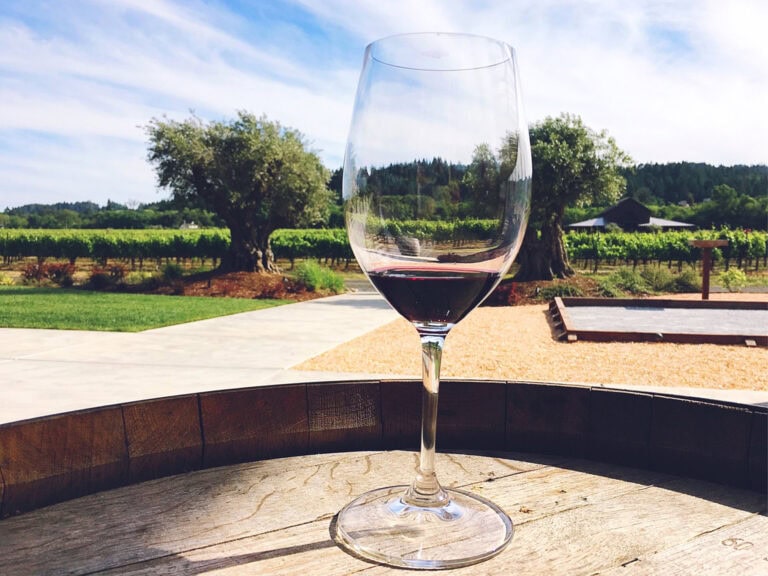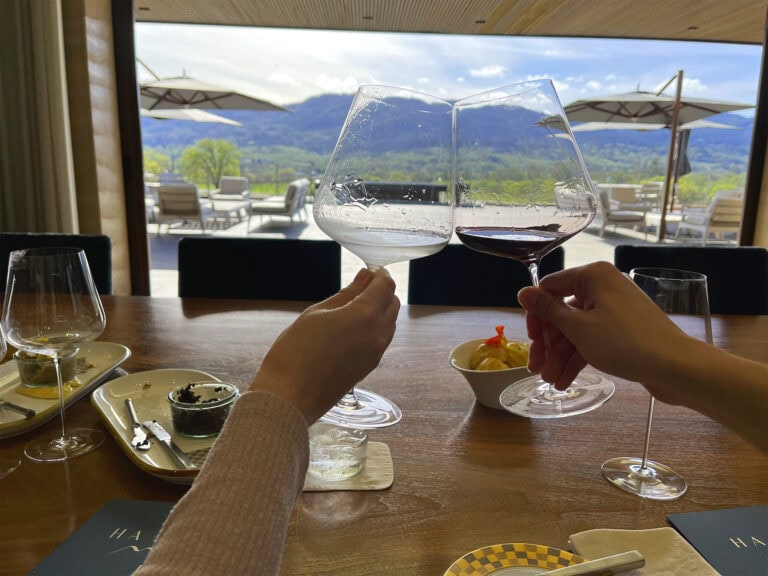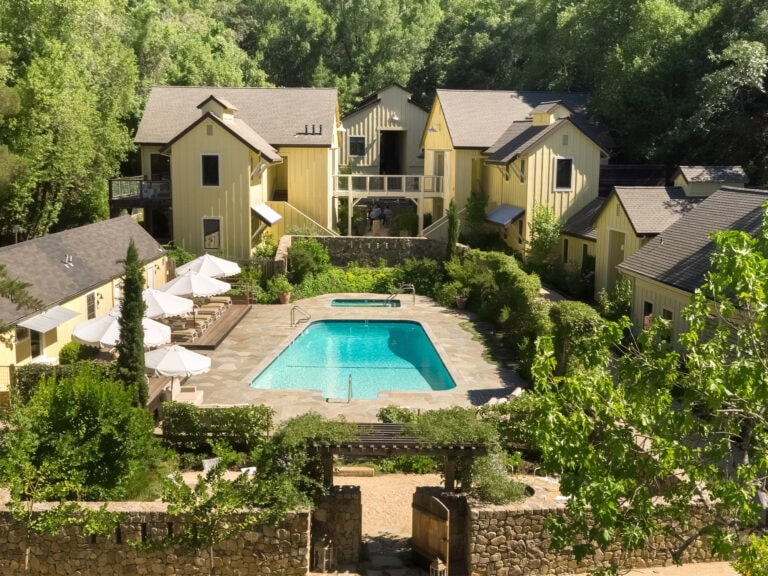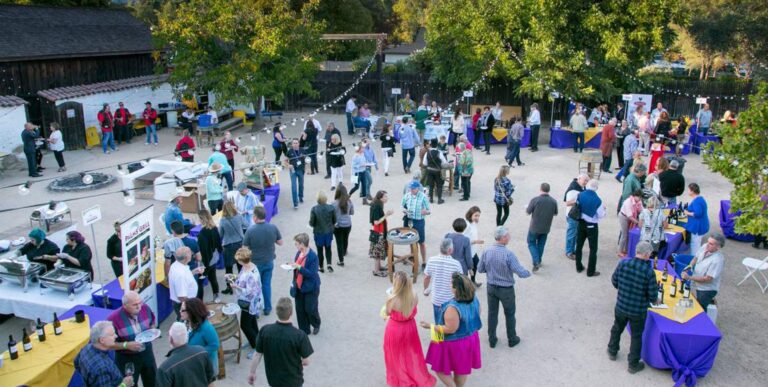Sauvignon Blanc in Sonoma County
Crisp and refreshing, yet seriously structured at its best, Sauvignon Blanc is the second-most popular varietal white wine in Sonoma County. If you’re looking for a Sauvignon Blanc to hold its own amongst Old World and New World expressions alike, you’ll enjoy discovering Sonoma County’s bounty.
Sauvignon Blanc Key Facts
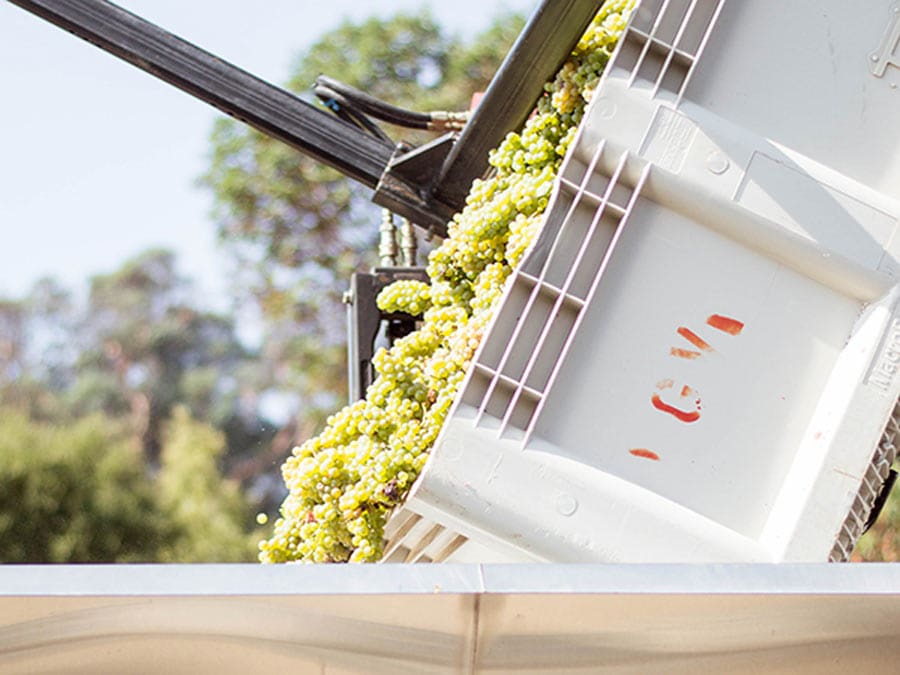
One parent of the red grape Cabernet Sauvignon, Sauvignon Blanc is an important white grape in Bordeaux, France, where it’s often made as a dry white or combined with Semillon to make a sweet or dessert wine. Sauvignon Blanc grown in the more northern Loire Valley of France, notably the regions Sancerre and Pouilly-Fumé, is revered for its high acidity and mineral notes.
More recently, the New World producers of New Zealand have defined an iconic style of grassy, fresh and fruity Sauvignon Blanc.
Sauvignon Blanc in Sonoma County
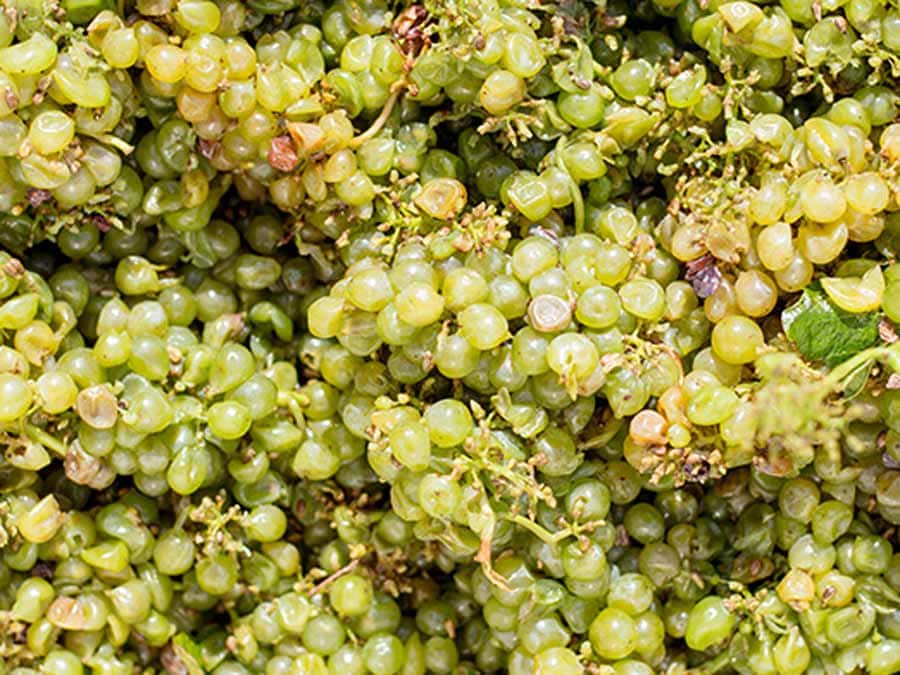
Sauvignon Blanc is the second-most planted white wine grape in Sonoma County, albeit at less than one-fifth of Chardonnay’s reign. In 2020, 14,125 tons of Sauvignon Blanc were crushed at an average price of $1,554 per ton; that same year, 47, 878 tons of Chardonnay were crushed at an average per-ton price of $2,311.
Sauvignon Blanc Style

As a parent of Cabernet Sauvignon, Sauvignon Blanc shares a key organic kinship: pyrazines. These nitrogen-containing compounds express themselves as “green” aromas, most notably as the scent of green bell pepper. In Sauvignon Blanc, pyrazines are often expressed as notes of fresh-cut grass, green grape, gooseberry, dry hay, and/or straw. These aromas are sometimes buffered by “minerality,” or the flavor/sense of crushed stones, which adds weight and depth to an otherwise crisp, refreshing white wine.
When Sonoma County winemakers reference international styles, they often may refer to a more “mineral-driven” Loire or Sancerre style, or a more “fruit-driven” New Zealand style. However, these styles merely provide a basic roadmap to what’s possible for Sauvignon Blanc in these regions.
In terms of winemaking, Sauvignon Blanc may be aged in stainless steel, concrete eggs, or barrels. While a rounder, more oak-influenced style may be achieved in oak barrels, the wine is very rarely fermented in new oak or fermented malolactically, as is often the case with Chardonnay. When aged on its lees in tanks or barrels, Sauv Blanc (also called “SB,” or “Savvy”) may acquire a creamy top note, while barrel aging may round out flavors and even add a hint of smoke.
Sonoma County’s Key Sauvignon Blanc Regions
Alexander Valley
This warm region is best known for Bordeaux varieties, and Sauvignon Blanc finds a natural home in the gravelly soils.
Wineries: Rodney Strong (Charlotte’s Home vineyard), Roth, Francis Ford Coppola.
Dry Creek Valley
This sunny AVA is best known as Zinfandel country, but it’s absolutely a sweet spot for Sauvignon Blanc, as well.
Wineries: Ferrari-Carano, Quivira (Fig Tree vineyard), Lambert Bridge, Dry Creek Vineyard
Russian River Valley
This often-foggy AVA may be the most New Zealand-esque of Sonoma County regions, producing fresh, deep, fruity Sauvignon Blanc wines.
Wineries: Merry Edwards, Hanna
Bennett Valley
A uniquely frigid nook in the middle of the county, Bennett Valley is home to some exciting cooler climate Sauvignon Blancs.
Wineries: Matanzas Creek (offering a range of Sauv Blancs from Bennett Valley up to Knights Valley)
Sonoma Valley
There are just a few notable exceptions in this mostly red wine region.
Wineries: Kenwood Vineyards, Benziger Family Winery
Written by Sonoma Insider James Knight.
Places Mentioned
THIS IS WINE COUNTRY.
Share your experience using #SonomaCounty or #LifeOpensUp
